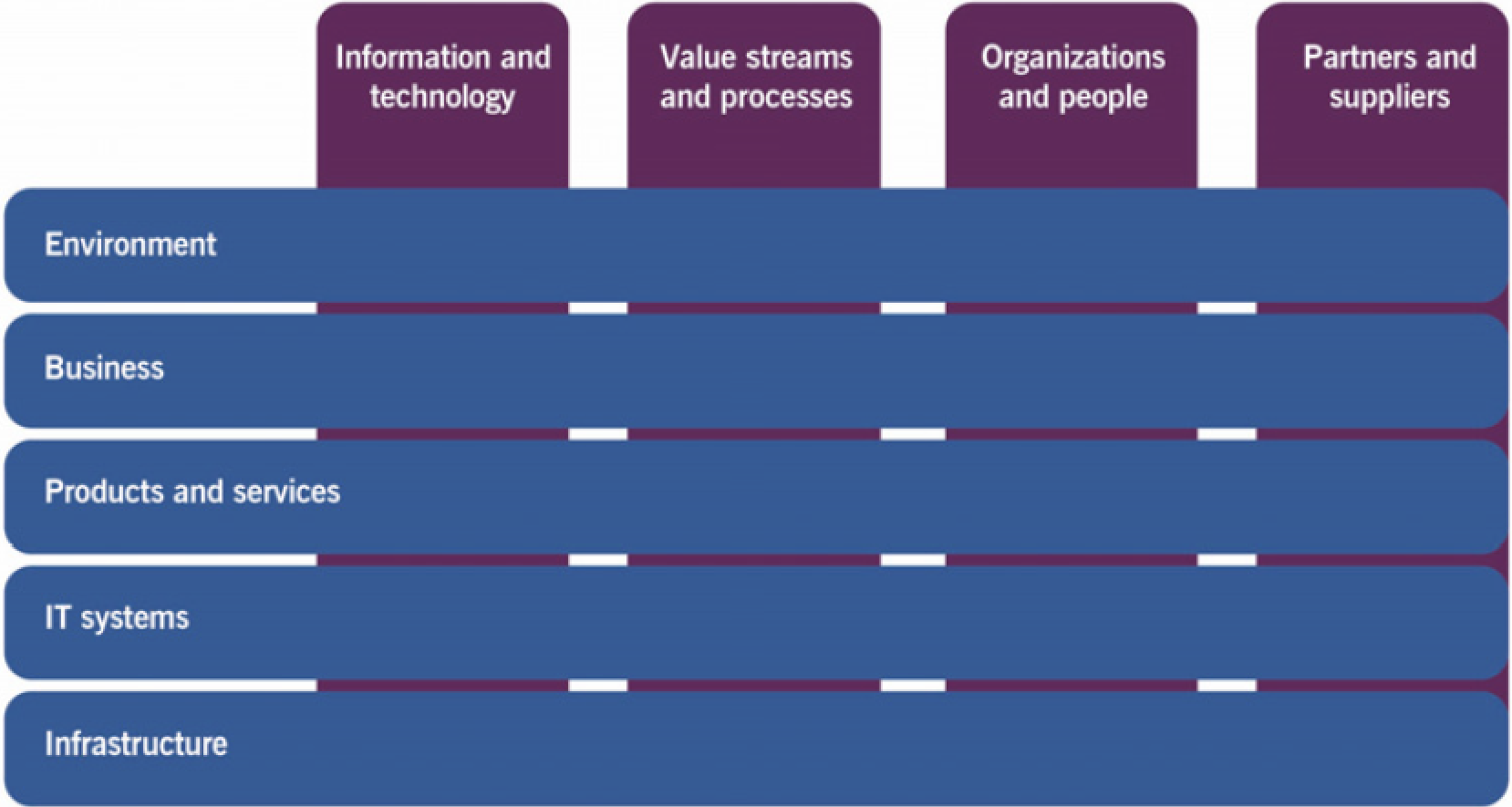ITIL 4 Strategic Leader Certification Course: Practices - Architecture Management (AM)
Purpose: to explain the different elements that form an organization
Focus is how elements interrelate so the organization can effectively achieve current and future objectives: must have good principles, standards, and tools in place to manage the architecture
Layers of organizational architecture:
- Business architecture
- Product and service architecture
- Information systems architecture
- Technology architecture
- Environmental architecture
Organizational strategy and vision will define how the organization manages the architectural layers (what layers would an organization manage if they had outsourced their technology to a third party ?)
Think carefully when scoping this practice, consider the organizational structure and which architectural layers would need to be managed:
- Internal service provider (ISP) would focus is on products, services, information systems, technology
- Enterprise architecture would focus on the business and environmental architectures
- Delivering products/services commercially (ESP), architecture management will focus on all layers
Consider all four dimensions and elements of the SVS when defining AM to achieve these objectives:
- Organization’s current architecture is understood and mapped to the organization’s strategy
- The target organization’s architecture is identified and agreed
- The organization’s architecture is continually optimized to achieve the target architecture

To meet the objectives:
- Analyze current architecture, create a baseline model
- Identify gaps that would hinder the achievement of organizational strategy
- Create a target reference model incorporating the strategy that eliminates gaps
- Now can evolve from current to needed; and it can be further refined as strategy or the environment changes
1. Practice success factors (PSF)
Two PSFs for AM:
- Ensuring that organization’s strategy is supported with a target architecture
- Ensuring that organization’s architecture is continually evolving to the target state
1.1 Target reference architecture
Target reference model: supports the organizational strategy and ensure the strategy is achievable
To develop a target reference model, consider:
- Organization’s strategy and its current performance
- Current organization’s architecture, benefits, and constraints
- Major pain points and their mapping to the architecture
- Organization’s portfolios and ongoing developments
- Environmental factors and trends
- Technology trends, risks, and opportunities
Analysis of this information provides understanding of current and future desired state and the corresponding architecture to fulfill that state
Measuring architecture effectiveness:
- Scalability
- Cost-effectiveness
- Compatibility to other organizations
- Compliance
- Agility
- Sustainability
- Security
Practices that interface with AM and achieving the target reference model:
- Strategy management
- Service design
- Portfolio management
- Risk management
- Software development and management
- Infrastructure and platform management
1.2 Continually evolving
Develop an architectural road map (a plan that would include recommendations and requirements for the taxonomy, standards, guidelines, procedures, templates, and tools that would use for any architecturally important initiative): define progressive initiatives to keep the architecture moving to the target state
Manage changes as projects or programs including stakeholders and other practices in the planning and execution
Develop and follow architectural standards: ensures AM is included in every SVS that deploys new/changed components, services, or changed architecture
Target architecture may never be achieved, AM shouldn’t be a constraint to its evolution
Go back to ITIL 4 Strategic Leader Certification Course: Practices to finish this chapter or to the main page ITIL 4 Strategic Leader Certification Course.
Interesting Management
-

Part 1: A good manager, better team motivation, better team productivity, better team results
When you are managing a team, “how to be a good manager” is the “must”...
-

Report optimization, increase your time management
As manager, I am doing many reports, even when I was an ITIL consultant, I still needed to do many reports...
-

Tools to get your ITIL intermediate certifications, the missing 15 points for the ITIL 4 Managing Professional
ITIL V3 is going to be obsolete...
-

The importance of the first customer meeting for the service
Managing an IT service when I start a new company is not an easy task, particularly true, if the service...



